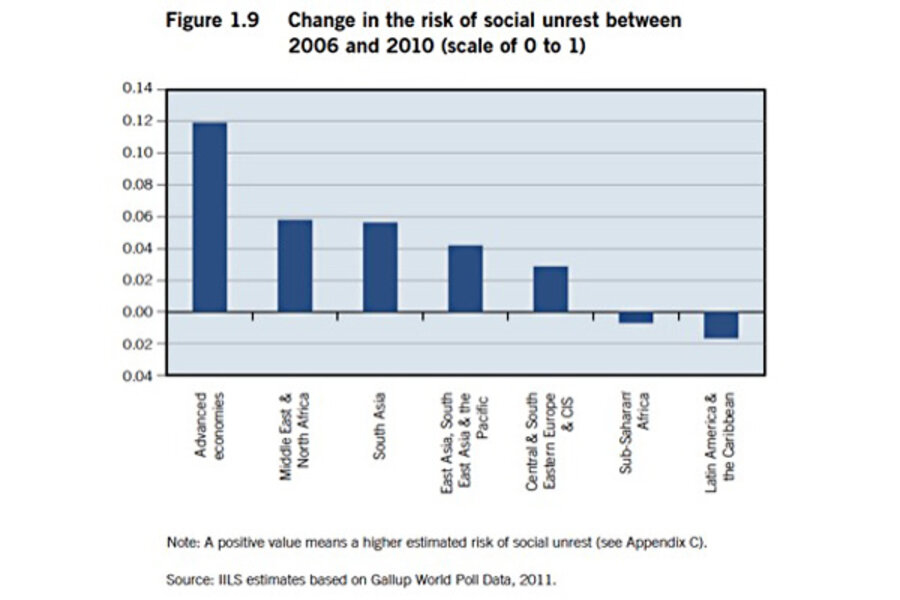The rising risk of social unrest
Loading...
The risk of social unrest is on the rise around much of the world, according to polling data summarized in the International Labour Organization’s latest World of Work Report (ht: Tortsen Slok).
Above, the ILO estimates that the risk of unrest has risen the most in advanced economies over the past five years, followed by the Middle East & North Africa and South Asia.
With people in the streets from Athens to Oakland, the ILO clearly has a point about the advanced economies.
And what factors contribute to a rising risk of unrest? The ILO pegs six, all of which sound familiar:
• Income inequality and perception of injustice: Perception of economic and social disparities, and increasing social exclusion, is said to have a negative impact on social cohesion and tends to lead to social unrest (Easterly and Levine, 1997).
• Fiscal consolidation and budget cuts: Austerity measures have led to politically moti- vated protests and social instability. This has been the case in Europe for many years, from the end of the Weimar Republic in the 1930s to today’s anti-government demonstrations in Greece (Ponticelli and Voth, 2011), but has also been a feature in developing countries, especially in over-urbanized zones, where protests have arisen following the implementation of austerity programmes imposed by the International Monetary Fund or the World Bank (Walton and Ragin, 1990). Meanwhile, societies that are more indebted tend to have higher levels of social unrest (Woo, 2003).
• Higher food prices: In addition to collective frustrations regarding the democratic process, rising food prices were also central to the developments associated with the Arab Spring (Bellemare, 2011).
• Heavy-handedness of the State: In countries where the State has resorted to excessive use of force (police and military) to tackle social upheavals instead of focusing on the actual causes of unrest, such actions have often exacerbated the situation (Justino, 2007).
• Presence of educated but dissatisfied populace: Countries with large populations of young, educated people with limited employment prospects tend to experience unrest in the form protests (Jenkins, 1983; Jenkins and Wallace, 1996). This has been the case recently in many southern European countries, such Greece and Spain.
• Prevalence of mass media: Past studies have highlighted the impact of radio on the organization of demonstrations, and clearly the use of the Internet (e.g. through the use of Facebook and Twitter) have played a role in recent incidences of unrest.





